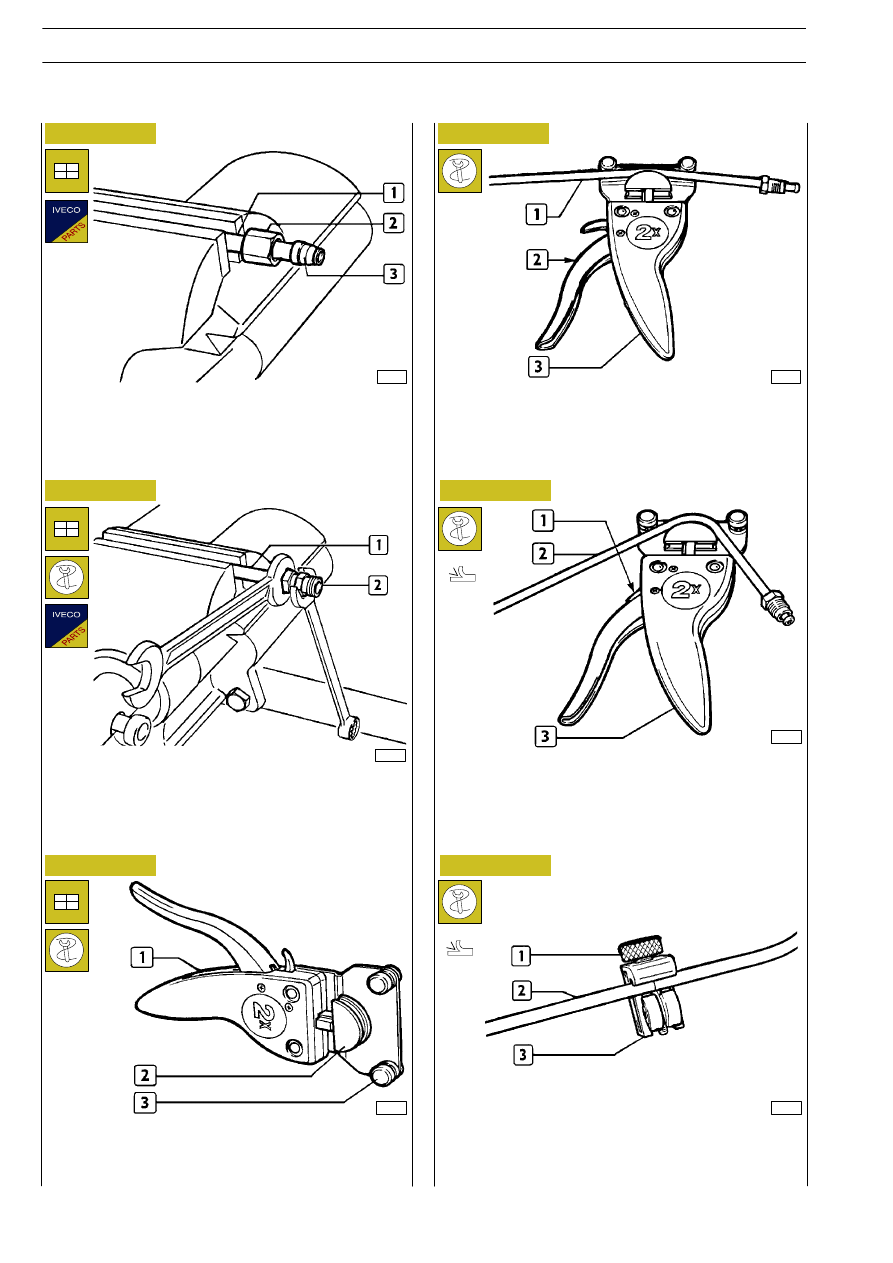Iveco Daily. Manual - part 318

Fit union fitting (2) and tighten so that ring (3, Figure 6) is locked
over the pipe (1).
Bending rigid pipes
C type re-flanging
31979
Fit nut (2) and ring (3) over the pipe (1).
Position pipe (1) in tool (3) and bend the pipe by acting on lever
(2).
31976
31977
31980
To remove the pipe (2) from the tool (3) use lever (1).
31978
31981
Fit tool (1) 99386523 and select components (2) and (3)
according to the diameter of the pipe to be bent.
Position pipe (2) in tool (3) 99386523 and tighten screw (1).
By holding the pipe (2) still, rotate the tool (3) until the pipe
has been completely cut.
Cutting rigid pipes
Figure 6
Figure 7
Figure 8
Figure 9
Figure 10
Figure 11
18
HYDRO-PNEUMATIC SYSTEM - BRAKES
D
AILY
Base - May 2004